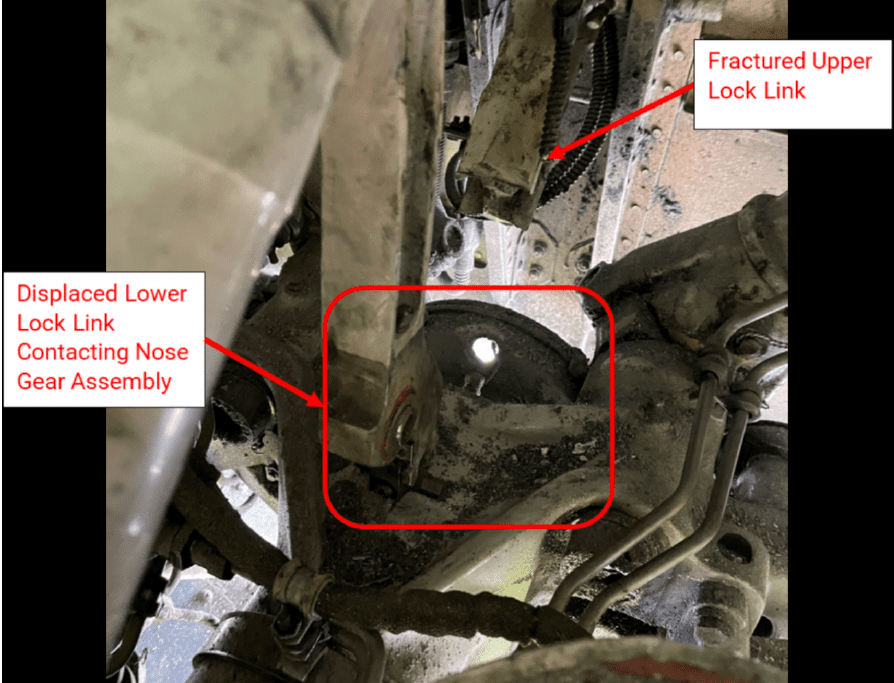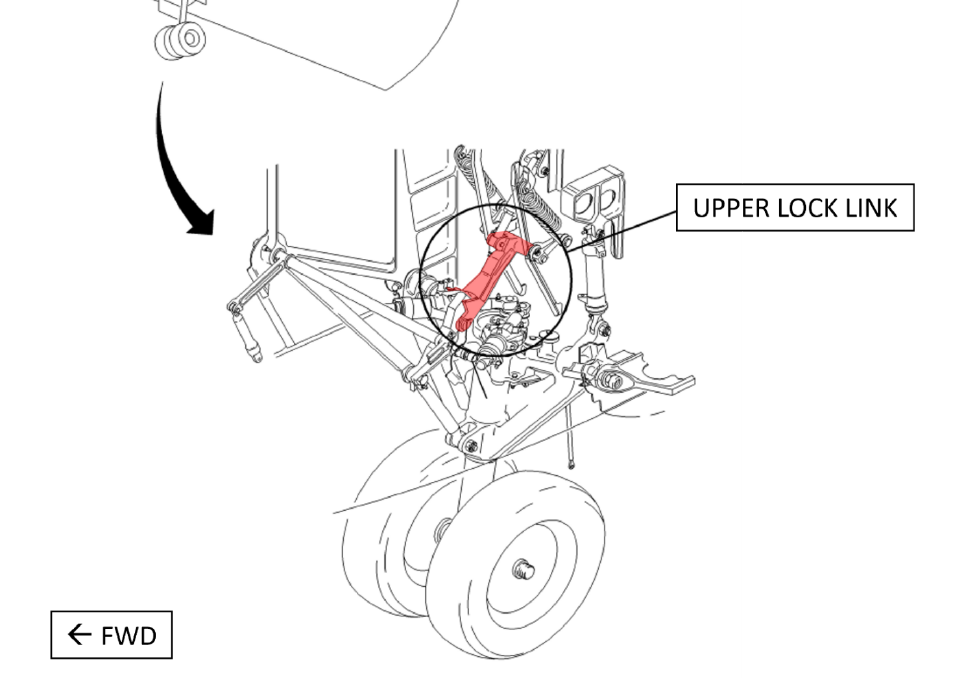On June 28, 2023, a Delta Air Lines Boeing 717-200, operating as Flight 1092, experienced a serious landing accident at Charlotte Douglas International Airport (CLT) in North Carolina.
The National Transportation Safety Board (NTSB) has released its final report, showing the probable cause as a fatigue fracture in the nose landing gear’s upper lock link mechanism.
Incident Overview
The incident occurred at approximately 8:58 AM EDT during a scheduled domestic flight from Atlanta, Georgia, to Charlotte.
The Boeing 717-200 was carrying 104 passengers and crew. It sustained significant damage when its nose landing gear failed to extend before landing. No injuries were reported, and all passengers and crew evacuated safely using emergency slides.
The issue became apparent when the first officer lowered the landing gear handle. This action was carried out at about 2,000 feet above ground level (AGL).
The nose wheel unsafe condition light illuminated, signaling a problem, which was confirmed on the aircraft’s electronic instrument system. The flight crew initiated a go-around to troubleshoot. They then following standard procedures and attempted a manual gear extension, but these efforts failed.

Crew and Air Traffic Control Response
The flight crew communicated the issue to Delta’s Atlanta flight control via the Aircraft Communication Addressing and Reporting System (ACARS). They declared an emergency with air traffic control (ATC).
As the aircraft approached 300 feet AGL during a second landing attempt, ATC reported that the nose wheel was not visible. This prompted flight crew to conduct another go-around.
Despite multiple attempts to extend the landing gear manually and normally, the crew could not resolve the issue. They made the critical decision to proceed with the landing, knowing the nose gear was not deployed.
The aircraft touched down about 1,400 feet from the runway threshold. The nose was then lowered onto the runway at approximately 80 knots.
The plane came to a stop just before taxiway W7. Airport rescue and firefighting teams sprayed water on the nose wheel area to prevent potential fires. After the fire chief confirmed the area was safe, the crew executed an orderly evacuation. This was carried out through the forward entry doors using emergency slides.

Investigation Findings
The NTSB’s Delta landing accident investigation revealed that a fractured upper lock link in the nose landing gear assembly was the probable cause.
This fracture allowed the lower lock link to swing freely, obstructing the gear’s movement and preventing it from extending. The damaged component was sent to the NTSB’s Materials Laboratory for detailed analysis, which confirmed the fatigue fracture as the root issue.
Fatigue fractures occur when repeated stress weakens a component over time, leading to failure. In this case, the upper lock link’s failure had catastrophic potential, but the crew’s professionalism and adherence to protocols ensured a safe outcome.
Safety Actions Taken
In response to the incident, Delta Air Lines conducted a thorough inspection of all upper lock links in its Boeing 717 fleet and spare inventory.
No additional cracks were found, suggesting the issue was isolated. Other operators of Boeing 717 aircraft followed suit, completing fleet-wide inspections in January 2024. They also reported no crack findings.
While the fatigue fracture was an isolated failure, it highlights the potential for undetected wear in high-stress aircraft parts. The successful evacuation and lack of injuries also reflect the effectiveness of crew training and emergency procedures.
The NTSB’s findings will likely influence future maintenance protocols for Boeing 717 operators, emphasizing the need for enhanced monitoring of lock link mechanisms.
This incident serves as a reminder that even rare mechanical failures can pose significant risks, requiring vigilance from airlines and regulators alike.

Conclusion
The Delta Air Lines Boeing 717 landing accident at Charlotte Douglas International Airport was a serious but well-managed event.
The NTSB’s identification of a fatigue fracture in the nose landing gear’s upper lock link as the cause has prompted thorough inspections across the Boeing 717 fleet, with no further issues detected.
This incident highlights the aviation industry’s commitment to learning from challenges and prioritizing passenger safety through proactive measures and rigorous standards.


Click the banner to subscribe to our weekly newsleter.



